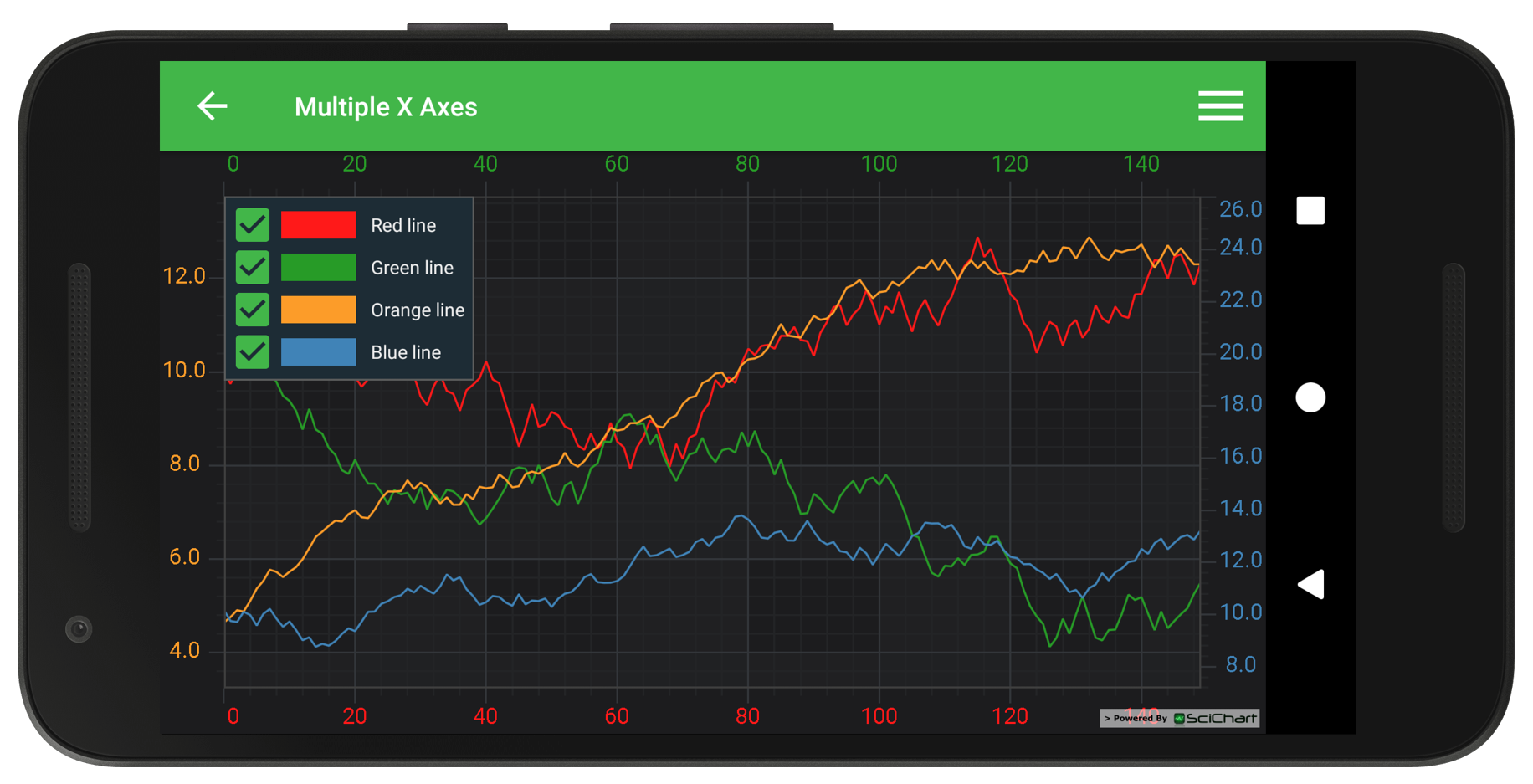Android Chart - Examples
SciChart Android ships with ~90 Android Chart Examples which you can browse, play with, view the source-code and even export each SciChart Android Chart Example to a stand-alone Android Studio project. All of this is possible with the new and improved SciChart Android Examples Suite, which ships as part of our Android Charts SDK.
Demonstrates a line chart with four series and multiple top / bottom X-Axis and left / right Y-Axis. SciChart supports multiple top or bottom X-Axes and multiple left and right Y-Axes. This example shows in a simple way how to register a line series on each axis.
Also it is possible to have multiple Y-Axes and create Vertical Charts positioning them vertically.
Example Usage
– Drag any axis to scale.
– Drag the chart to zoom.
– Double click to reset zoom.
Tips!
To set axis placement you need to call setAxisAlignment(AxisAlignment) method with appropriate AxisAlignment value
The setAxisId(String) method can used to assign Id to and axis and attach a RenderableSeries to it.
To register RenderableSeries on axis you need to set appropriate xAxisId or yAxisId.
The full source code for the Android Multiple X-Axis Chart example is included below (Scroll down!).
Did you know you can also view the source code from one of the following sources as well?
- Clone the SciChart.Android.Examples from Github.
- Or, view source and export each example to an Android Studio project from the Java version of the SciChart Android Examples app.
- Also the SciChart Android Trial contains the full source for the examples (link below).


